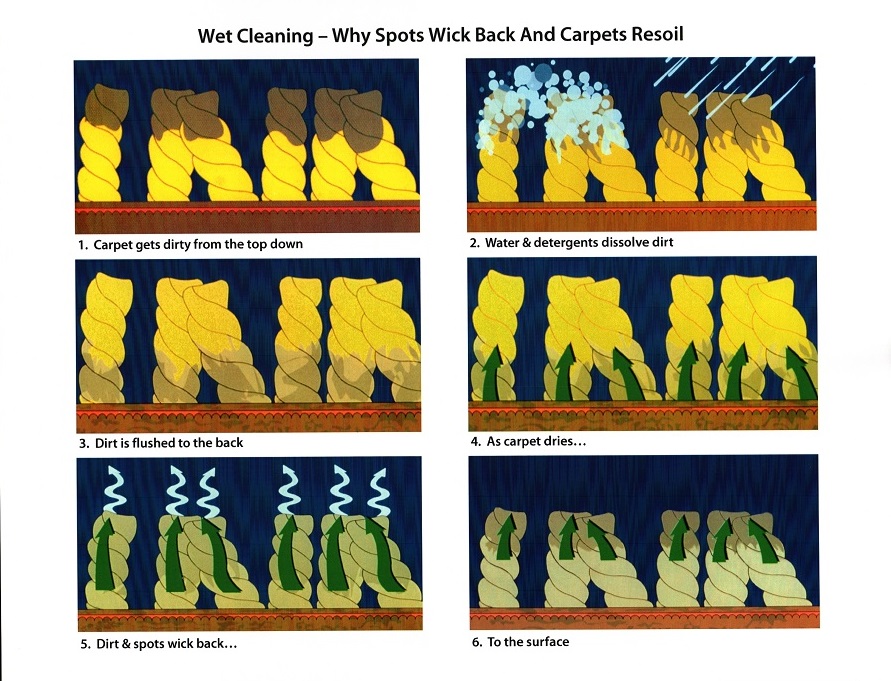Why You Should Avoid Wet Carpet Cleaning Methods
Most professional carpet cleaning services rely on a wet carpet cleaning method commonly known as steam cleaning. However, this type of “steam cleaning” is not really steam cleaning at all; technically, it is hot water extraction, and professional cleaning technicians typically use a wet vacuum to suck up a mixture of hot water and detergent which was used to shampoo the carpet.
Problems with Hot Water Extraction
If you are allergic to mold or dust mites, you probably already know that you should keep the relative humidity level in your home below 50% to avoid the growth of unwanted organisms. Mold and dust mites thrive in damp environments, and hot water extraction leaves carpet fibers damp. Mold spores can germi- nate after only 12 hours in hospitable conditions, and a mold colony may form in as little as a day.
Wet carpet cleaning methods often dampen the padding below the carpet, too, and the covered padding takes even longer to dry; in some cases up to 2 weeks. All this provides ideal conditions for mold and mildew growth in your home or workplace. Hot water extraction can also damage the floor beneath the padding, especially if it’s wooden.
Some furniture, when exposed to wet carpet, may stain the carpet with dyes. Metal parts touching the carpet may leave rust stains.
Hot water extraction can damage the car- pet itself as well. The moisture may cause the carpet to shrink, lose its color, delamination and loosen up seams.
Finally, wet carpet cleaning leaves behind dirty, soiled water a chemical detergent residue. This moisture and resi- due eventually wicks back to the surface and when this moisture evaporates, it leaves behind soil, oils and residue that makes the carpet sticky and attracts more dirt to the carpet fibers.

